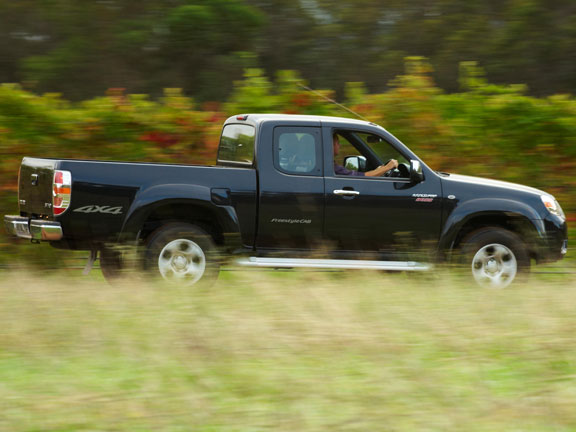
Looking for a lifestyle/tow ute? Well, from the heart of Thailand comes… pretty much any Asian-brand one-tonner you’d care to think of.
Thailand is the epicentre for purposeful pickup trucks, including the Mazda BT-50. These Thai utes are a good bunch: strong on ability and image.
There are a couple of very specific problems with the BT-50, though, so we’d better get those out of the way.
The first is that if you’re reading this after October 15, an all-new BT-50 will already have made its world debut at the Sydney International Motor Show, meaning that the current version is on the brink of being so-last-season.
The second issue with BT-50 is that it’s not terribly popular in the tray-toting scheme of things. Year-to-date the running order on the ute sales charts goes something like Toyota Hilux, Nissan Navara, Ford Ranger, Holden Colorado, Mitsubishi Triton – and then our present protagonist, the BT-50. Odd, given the podium-placed Ranger is essentially the same vehicle. Seems there’s just something about a Mazda ute that doesn’t grab us Kiwis.
In Australia, the BT-50 easily beats the Ranger. Mazda New Zealand is attempting to address both of those issues by an increased advertising/marketing focus on the BT-50 as a glamorous lifestyle vehicle rather than mere workhorse, showcasing the range of accessories on offer. This theoretically gives the BT-50 broader appeal – and serves as a bit of a sales hurry-up as the vehicle enters runout.
The BT-50 sticks closely to the current one-tonne formula. That’s good news, for it means a torquey diesel powerplant, tough separate-chassis construction and the ability to tow no less than three tonnes in the SDX 4WD manual specification featured here. Opt for the automatic (like the manual, it’s a five-speeder) and you might get an easier time through city traffic, but you do give up 500kg of that towability.
The 3.0-litre turbo diesel four is de rigueur for the class. It’s gruff (aren’t they all?) but with a mighty 380Nm of torque on tap at just 1800rpm it makes light work of whatever you throw at it.
Mazda offers a range of BT-50 models in rear or part-time four-wheel drive (but both with high ride height). Our SDX double-cab is the latter, but you can trim $7500 off the sticker price by going for the two-wheel drive version.
A ute of this type is never going to ride or handle as well as a crossover wagon, with ball-and-nut steering and a rigid axle at the back (all the better for off-roading). But put some weight in/on the back and the BT-50 is an entirely competent on-road express.
With a relatively slow tiller, a mountain of torque and big, bouncy footwear, you have to steer smoothly and watch the back wheels as you power out of third-gear corners in the wet. But that’s true of any pickup. Be deliberate and economical with your inputs and it’s actually quite an enjoyable experience. After all, who wouldn’t feel great driving a truck?
Pickups stopped having rudimentary interiors years ago. In fact, one of the features of the BT-50 when it launched back in 2006 was a car-like cabin. The materials are still very durable and some of the macho styling detail is a bit contrived, but there’s very little to make you feel like you’re roughing it. Even if you’re off-road and in the rough.
A bugbear of these types of double-cab utes is usually an upright rear seat that does not lend itself to long-haul travel. The Mazda is no different, although there’s plenty of legroom and a great view out.
The BT-50 is still a great ute, no question – brand preference aside, certainly as capable as the competition in the areas where it counts. Given its current model-cycle and sales status, it’s probably also the right time to ask for a great deal.
See the Mazda BT-50 for sale.